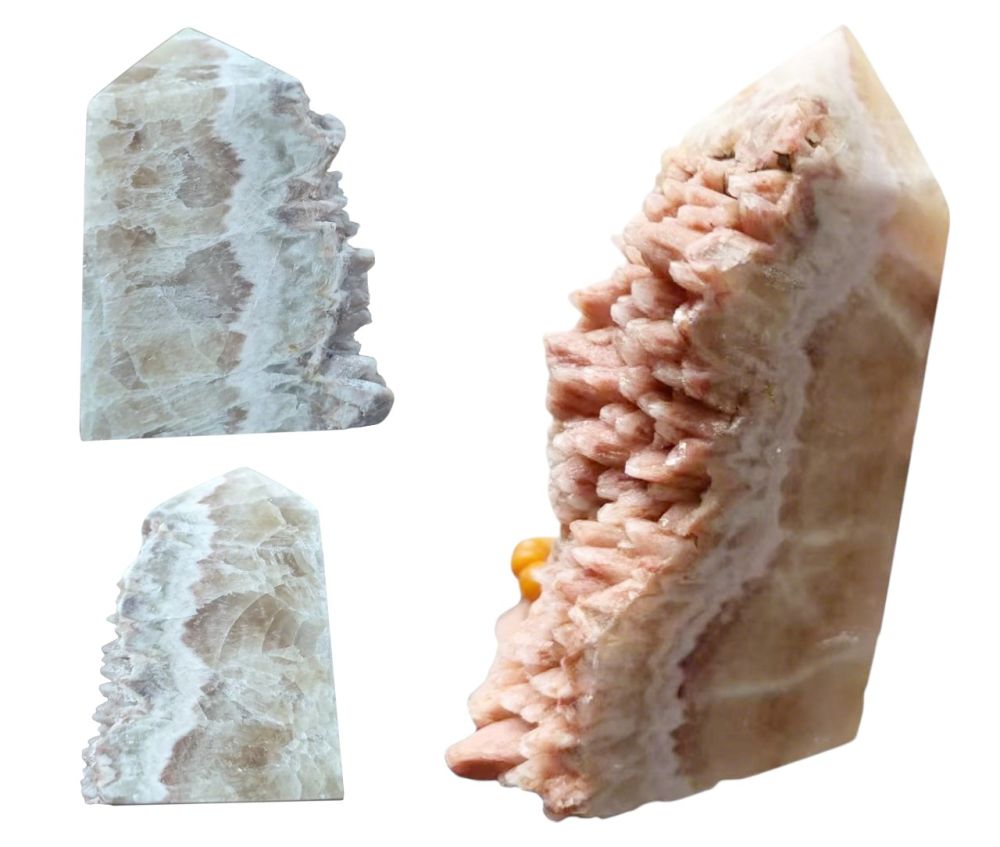We use cookies to make your experience better.
TimmersGems has a new website, existing customers also need to register again.
Calcite points druzy in various shades of colour, packed per kilo.
Calcite points druzy in various shades of colour, packed per kilo. The calcite is delivered to you in an assortment.
Availability:
In stock
SKU
122337
Calcite points druzy in various shades of colour, packed per kilo. is available to buy in increments of 3
The mineral calcite (also known as lime spar) consists mainly of the salt calcium carbonate (CaCO3) and is one of the most common minerals in the earth's crust. Calcium carbonate is formed when soluble calcium ions come into contact with CO₂ (carbon dioxide forms a carbonate ion when there is a positive ion in a solution). Calcium carbonate is a poorly soluble salt, which causes the formed CaCO₃ to precipitate; this occurs according to the following reaction: Ca²⁺(aq) + CO₃²⁻(aq) → CaCO₃(s). Calcite has a trigonal crystal system and belongs to the space group R-3c. A very pure form of calcite is also called bispar because of the double refraction of light in this mineral. It has a rhombohedral structure and is sometimes found as rhombohedral prisms, but it also often occurs in other forms, such as scalenoedra, or in fibrous, granular or compact form. The crystal structure is mainly a result of the temperature, degree of supersaturation in the immediate vicinity of the crystal and the CO₂ pressure. The calcite structure is the stable modification of CaCO₃ at room temperature. There is another form, aragonite, which changes to calcite at 743 K. In pure crystalline form, calcite is clear, colourless and translucent, but due to impurities (such as copper or sodium salts) it can take on a variety of colours, such as grey, blue, violet, green and even black. Often it is also opaque white. The mineral can exhibit both phosphorescence and fluorescence. The hardness is by definition 3. Calcite is highly birefringent. This optical property was first described by Rasmus Bartholin when the Icelandic form of the mineral, consisting of large crystal-clear rhombic rhombohedral plates, became available. Christiaan Huygens provided the first explanation with his wave theory of light. Calcite is a common constituent of sedimentary rocks, veins, and deposits in hot springs and caves in karst areas (as stalactites). It is the mineral that forms limestone and is therefore the most common mineral of biological origin. Calcite is the main constituent of limestone, chalk, and marble, and is also an important constituent of marl, calcareous sandstone, and limestone shales. Calcite is responsible for the chemical weathering of igneous and metamorphic rocks, which results in the formation of sedimentary rocks. Calcite is soluble in CO₂-containing water under slight pressure. As it falls into the air, rainwater absorbs carbon dioxide gas, making it acidic. This acidic rainwater is able to dissolve lime. In underground currents, this material can be transported in solution until, after contact with atmospheric pressure, CO₂ escapes and the calcite precipitates. This is how stalagmites and stalactites are formed in caves.
| Dimensions | Divers |
|---|---|
| Country of Manufacture | Mexico |












